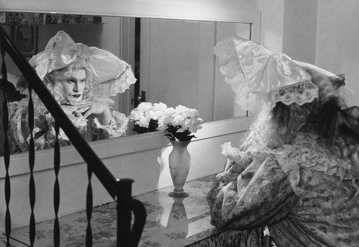
Catherine Sullivan, "Baby Jane/Amusement Infusion," production still, 2002. Performer: Michael Garvey. From "Big Hunt," five channels shot on 16mm film transferred to video, projected from DVD, 21 min 48 sec per channel, black and white, silent. © Catherine Sullivan.
Contests. Art Shows. Expos. Special Exhibits. Art Festivals. It’s crazy.
While they are called by different names, art educators often have a similar reaction: Someone has a big idea and wants student art to decorate a space. The number of art contests we see in the average school year can make your head spin. There are contests to make posters about everything from teeth to tap water to trash recycling. There are contests for holidays and anniversaries. There are even contests for exhibits that the student artists themselves can’t attend. I’m serious!
But contests, if there is a clear set of criteria that judges are using to pick the artists, can offer students and teachers a chance try new ideas and tap into themes, media, and forms of expression that may not see the light of day in an existing curriculum. Distinguishing between contests that essentially exploit students vs. participating in meaningful and interesting opportunities with them is part our work. Classroom time is never enough for many kids and creating works of art outside of school that utilize meaningful exhibition opportunites can actually enhance curriculum and student portfolios.
Contemporary art gives students a basis and starting point for looking at themes, such as Protest and Consumption, that can influence extra-curricular work dramatically. Artists such as Jenny Holzer, Nancy Spero, Michael Ray Charles and Kerry James Marshall, for example, can give students new insights into work that’s about race, activism, propaganda and stereotypes. Exhibit opportunities and contests can be a chance for students to get inspired by art outside of the planned curriculum.
How do you use (or not use) these kinds of “opportunities” in your own classroom?




Pingback: Calling all photographers: Museums (and Wikipedia) want to recruit you! | Art21 Blog